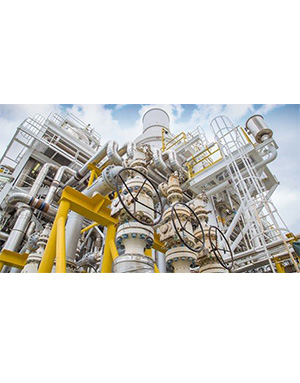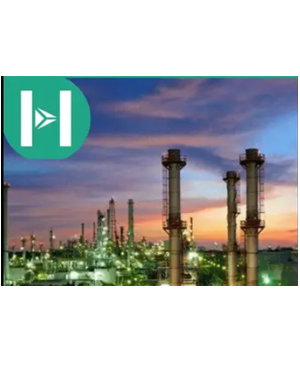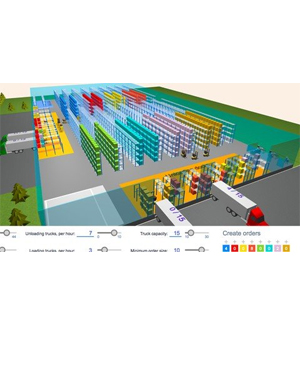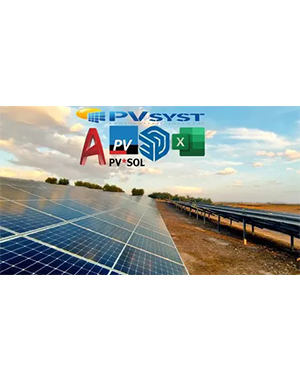Download Chemical, Oil & Gas: A Beginner’S Guide To P&ID Development
Chemical, Oil & Gas: A Beginner’S Guide To P&ID Development udemy video course download, Read, Review, Develop Oil and Gas, Chemical, Petrochemical P&ID including operability, safety, maintainability aspects. This course aims to provide the students the skill to prepare, interpret and read P&ID’s. The course starts with a comprehensive introduction to the Piping and Instrumentation Drawing (P&ID) is delivered.
As a second step the principles that drive the P&ID development is described with real P&ID examples. The course is replete with examples of real industrial setting P&ID’s. After going through the principles of P&ID, the steps for P&ID development are introduced These steps are easy and simple ones that can be interchangeably applied. Next the legend P&ID is described in detail. With this you can easily read the P&ID. However, to develop a reviewer’s awareness some detailed inputs on valve, Pipes, control systems and equipment templates is provided.
- Various aspects that go into the P&ID creation
- How to interpret a P&ID?
- How to prepare a P&ID?
- How to read a P&ID?
- What are the different principles to be applied in a P&ID? How to identify them?
- Examples of identifying the safety, operability and reliability components in a P&ID
- Who are the different stakeholders for the Project P&ID’s?
- What is hierarchy of rules while preparing a P&ID?
- What are different types of P&ID? Explained with real example
- Difference between PFD and P&ID brought out through real example
- What is a a legend P&ID? and the different types.
- Know about piping, instrumentation and other symbology
- Rules of P&ID Development- Piping, layout, instrumentation
- 12 Steps of P&ID Development explained and demonstrated with an application example
- Valves: Purpose, Uses, Types, Type selection for different service, isolation philosophy
- Liquid sampling system types and template
- Pipes: Symbology, line numbers, specification break, piping interface
- Process control: purpose, process variables, heat exchanger temperature control, feedback vs feedforward control, control loop components
- P&ID Template: Vertical Vessel
- P&ID Template: Horizontal Vessel
- P&ID Template: Heat Exchanger
- P&ID Template: Vertical Vessel
- P&ID Template: Vertical Reboiler
- P&ID Template: Centrifugal Compressor
- P&ID Template: Centrifugal Pump
- P&ID Template: Centrifugal Pump Minimum Flow alternatives
- Relief valve template
- Process Control System – Purpose, Example, Safety Considerations
- Analysis of control requirements
- How material balance is controlled through process control
- Process control: General Rules
- Process control template for fuel gas knockout drum
- Process control template for centrifugal compressor
- Process control template for centrifugal pump
- Identify Distillation column controls
- Different types of distillation column feed controls discussed and presented
- Different types of reflux and product controls for distillation column discussed
- Different types of pressure control for distillation column presented
Course content
- Section 1: Introduction
- Lecture 1 What is covered in this section
- Lecture 2 Introduction
- Lecture 3 Introduction to a Real Offsite Storage Tank P&ID
- Lecture 4 Depiction of P&ID use though a Real P&ID
- Section 2: Principles of P&ID Development
- Lecture 5 What will be covered in this section
- Lecture 6 PFD of Gas Sweetening System Absorber
- Lecture 7 Principles of P&ID Development – Safety
- Lecture 8 Principles of P&ID Development – Operability
- Lecture 9 Principles of P&ID Development- Reliability
- Lecture 10 Principles of P&ID Development- Maintainablity
- Lecture 11 P&ID Stakeholders
- Lecture 12 Hierarchy of Rules
- Lecture 13 Plant Operation Monitoring
- Section 3: P&ID Types
- Lecture 14 What is Covered
- Lecture 15 P&ID Types
- Lecture 16 Process & Utility P&ID with Real P&ID Example
- Lecture 17 Utility Distribution P&ID with Real P&ID Example
- Lecture 18 Interconnection P&ID with Real P&ID Example
- Lecture 19 Tie-in P&ID with Real P&ID Example
- Lecture 20 Demolition P&ID with Real P&ID Example
- Lecture 21 Auxiliary P&ID with Real P&ID Example
- Section 4: Legend P&ID
- Lecture 22 Types of Legend P&ID
- Lecture 23 Piping Components- Valves
- Lecture 24 Piping Symbols – 1
- Lecture 25 Piping Symbols – 2
- Lecture 26 Instrument Legend
- Lecture 27 Role of instruments
- Lecture 28 Instrument identification-1
- Lecture 29 Example of Instrument Identification
- Lecture 30 Real life comparison to P&ID tagging
- Lecture 31 Example of Instrument Identification
- Lecture 32 Instrument Identification-2
- Lecture 33 Instrument Identification-3
- Lecture 34 Instrument Identification-4
- Lecture 35 Instrument Identification-5
- Lecture 36 Instrument Tagging
- Lecture 37 Instrument Connections
- Lecture 38 P&ID of Gas Sweetening System Absorber
- Lecture 39 Computing function Identification
- Lecture 40 Instrument Line Identification
- Lecture 41 Indicate Primary Flow Elements in P&ID
- Lecture 42 Control Valves
- Lecture 43 Self actuated devices
- Lecture 44 Valve Failure Condition in P&ID
- Lecture 45 Control Loop indication on P&ID
- Section 5: General Rules for P&ID Development
- Lecture 46 General Items
- Lecture 47 Piping and Instrumentation Drawing – Equipment Rules
- Lecture 48 Layout of P&ID
- Lecture 49 Piping and Instrumentation Drawing – Piping Rules
- Lecture 50 Piping and Instrumentation Drawing – Instrumentation Rules
- Lecture 51 Example of
- Section 6: Steps in P&ID Development
- Lecture 52 Steps in P&ID Development
- Lecture 53 Example with Real P&ID’s for the application of the Stpes in P&ID Development
- Lecture 54 Step 2
- Lecture 55 Step 3
- Lecture 56 Step 4
- Lecture 57 Step 5
- Lecture 58 Step 6
- Lecture 59 Step 7
- Lecture 60 Step 8
- Lecture 61 Step 12
- Lecture 62 Step 10
- Section 7: Valves
- Lecture 63 What is a Valve and its uses
- Lecture 64 Example – Valve uses demonstrated through P&ID
- Lecture 65 Valving Arrangement – Where it’s used
- Lecture 66 Standard Isolation
- Lecture 67 Positive Isolation
- Lecture 68 Isolation Philosophy
- Lecture 69 Battery Limit Valves
- Lecture 70 Purpose of Valves
- Lecture 71 Gate Valve
- Lecture 72 Advantage of Gate Valve
- Lecture 73 Gate Valve Application
- Lecture 74 Gate Valve Classification
- Lecture 75 Body Bonnet GATE valve
- Lecture 76 Rising stem gate valve
- Lecture 77 Globe valve
- Lecture 78 Ball valve
- Lecture 79 Check Valve
- Lecture 80 Valve Selection – 1
- Lecture 81 Valve Selection- 2
- Lecture 82 Motor Operated Valves
- Lecture 83 Remote operated / Shutdown Valves
- Lecture 84 How are sampling systems shown on P&ID?
- Lecture 85 Protective Preheating of Pipelines
- Lecture 86 Utility tie in on P&ID
- Section 8: Pipes
- Lecture 87 Fluid Transfer equipment
- Lecture 88 Pipe
- Lecture 89 Pipe Symbology
- Lecture 90 Pipe identifiers
- Lecture 91 Pipe Tags/ Line Numbers – 1
- Lecture 92 Pipe Tags/ Line Numbers – 2
- Lecture 93 Pipe Tags/ Line Numbers – 3
- Lecture 94 Piping Interface
- Lecture 95 Piping Specification Break
- Section 9: Process Control
- Lecture 96 Introduction to Process Control
- Lecture 97 What does a control system do?
- Lecture 98 Process Variable
- Lecture 99 Heat Exchanger Temperature Control
- Lecture 98 Process Variable
- Lecture 99 Heat Exchanger Temperature Control
- Lecture 100 Example – Process Variable
- Lecture 101 Feedback Vs Feedforward Control – 1
- Lecture 102 Feedback Vs Feedforward Control – 2
- Lecture 103 Control Loop Components
- Section 10: Equipment – Vessel, Column, Exchanger
- Lecture 104 Vertical Vessel P&ID Template
- Lecture 105 Exchanger P&ID Template
- Lecture 106 Distillation Column Template
- Lecture 107 Vertical Reboiler Template
- Lecture 108 Centrifugal Pump Template
- Lecture 109 Centrifugal Compressor Template
Course details
- Movie quality: MP4 | Video: h264, 1280 × 720
- Audio quality: Audio: AAC, 44.1 KHz, 2 Ch
- Movie duration: 5h 19m
- Number of lessons: 16 sections, 109 lectures
- Language: English
- Compressed file size: 2.90 GB




